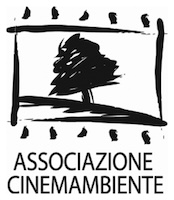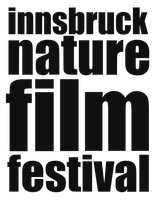Robert J.
Flaherty
biography
He was born in Iron Mountain, Michigan, on February 16th 1884. He spent his whole childhood among miners villages and the countryside. For several years he lived in an isolated community with no school and he learnt to live and deal with the local Indian people. He was later sent to study at a Upper College in Toronto, Canada, a school which followed the English public school system, but he soon went back home, to his mines and wildlife. In a last attempt to give him an education, his parents sent him to the Michigan College of Mines where Flaherty met Frances Hubbard, the daughter of a well-known geologist. They both loved adventure and they soon fell in love with each other. Seven months afterwards Robert left school yet again and went back home to work with his father, exploring the mine depots. That is when he learnt to draw maps and above all to travel and survive in unknown countries. In just five years he took part in several mining expeditions and, between journeys, he got engaged to Frances. In 1910 he was employed by Canadian William Mackenzie, a road builder, to explore the eastern coast of the Hudson Bay, a journey which would have taken him to the land of the Eskimos. Between 1910 and 1912, during two different explorations, he explored the eastern islands of the Hudson Bay. Moving around on foot or by sleigh or sometimes using a canoe he drew the map of the entire region, he took photographs and managed to get to know the local populations. In 1913, while he was getting ready for his third journey, Mackenzie advised him to take a movie camera with him. The idea thrilled Flaherty who bought a Bell and Howell and followed a three-week course on cinematographic techniques. During his expedition he filmed material for approximately 17 hours, and once back in Toronto he printed out what he had shot. By accident though, he dropped a cigarette which burnt the negative and only a little part of it was saved. Meanwhile he had married Frances (1920) and under her encouragement he decided to make a new film. He immediately started looking for funds for his projects which he found with John Revillon of Revillon Freres. He then returned to the Hudson Bay where he made Nanook the Eskimo, which is about the struggle to survive these populations face in the extremely difficult Arctic climate. Although his film was not the first one shot “on site” with non professional native actors, it definitely was the first work to attract the attention of both the public and critics. Hollywood director Rex Ingram enjoyed it enormously “Nanook is one of the most vital, dramatic and human films ever shown on the big screen”. This success opened the way to a new way to make movies, starting to show that a documentary could provide the studios with the same results as a film, in terms of both box-office profits and prestige. Besides, it was less expensive. Hollywood industry was still investing incredible amounts of money in the shooting of films like Ben Hur and The Ten Commandments, but they were starting to realise that with a fraction of the cost they could produce films like Chang, The Silent Enemy, Simba and this was what they did, with success. This is why Nanook of the North aroused the curiosity for this new cinematographic genre in directors, producers and critics alike. In 1923 Jesse Lasky from Paramount offered Flaherty the opportunity to shoot a film on a location of his own choice, guessing that wherever the film was shot it would have been another success just like Nanook of the North. So Robert left for the Samoan islands together with his wife Frances and his family and he decided to base himself in the village of Safune. There he filmed the local customs just when these, due to the British colonization, were starting to change, giving way to a “westernization” of the island. Moana was born exactly from this contrast between different cultures, past and present, traditions and novelties. It is the story of two lovers fighting against old rules in order to assert their freedom. Even though quality-wise Moana is inferior to Nanook of the North and other films of his, it had such an enormous success that John Grierson used the word “documentary” for the first official time to define this type of film. During the editing Flaherty clashed with the production world for the first time in his career. Paramount had in fact decided to cut several parts of the film because it was too long. In 1925, after Moana he was commissioned to make a short by actress Maude Adams on behalf of the Metropolitan Museum of Art: The Pottery Maker. In the same years he started an impressionist study of Manhattan which he called 24 Dollar Island and which he finished in 1927. Then Irving Thalberg, Metro Goldwyn Mayer golden boy, persuaded Flaherty to make a film set in the Pacific islands, an adaptation of White Shadows in the South Seas by Frederick O'Brien. But the making of the film, shot in Tahiti, was so deeply affected by the differences between Flaherty and his second director, W.S. Dyke II, that the former, after the editing, decided not to have his name listed in the credits. (White Shadows is in fact still considered basically a WS. Dyke Il work). In 1929, the period which saw the birth of sound film, Fox Film Corporation asked him to make a film about Acoma Indians in New Mexico. Again problems with compromising with the production made him decide to leave the project. It was then that Flaherty met Murnau, a famous German director, who had recently sought refuge in the United States and decided to film Tabu with him. During the shooting though there were quite a few clashes between the two due to personality and artistic differences. Murnau basically took control of the film adding his creative and dramatic touch, typical of his way of making movies, to the original documentary structure. In later years Flaherty told George Sadoul that the film was entirely Murnau's. Discouraged and disappointed after Tabu he received a proposal from John Grierson, who had by then become the director of London Empire Marketing Board Film Unit, to work at what would have become Industrial Britain. Flaherty therefore moved to London where he met Michael Balcon of British Gaumont, thanks to whom he had the chance to shoot a film set on the western Irish coast, more precisely in the Aran islands. That was the birth of Man of Aran telling the stories of a group of fishermen: it was the first film since Nanook that Flaherty completely controlled the creative process. It was an enormous success and gave him the chance to meet producer Alexander Korda who asked him to direct a script based on Rudyard Kipling's Elephant Boy. The film, set in India, proved to be a disaster for the American director because, as had happened before when he had had to deal with producing companies, there were contrasts on how to make movies. Not trusting Flaherty completely, Alexander Korda put at his side one of his own troops and wanted some professional actors too, while Flaherty's way of filming was based on using amateurs. Besides, during the editing Korda added the sound and some scenes that had been shot by Zoltan. Therefore Elephant Boy became a melodrama, absolutely alien from Flaherty's ethnographic purposes and basically aimed for the launch of a new rising star: little Sabu, the main character. Two years later, in 1939, a disillusioned and nearly bankrupt Flaherty was invited back to the States by Pare Lorentz, then director of the U.S. Film Service, to make The Land, a propaganda film about the American agricultural industry. Being obviously incapable of making a film promoting the New Deal optimism, Flaherty concentrated on the problems and contradictions of the Americans. The film was quickly made and equally quickly withdrawn from distribution. In 1948, thanks to Standard Oil's funding, Flaherty visited the inhabitants of the marshes in Louisiana. The result was Louisiana Story, the story of a boy living among animals which marked a true redemption after years of unsuccessful films. The film won Special Award at the Venice Film Festival for its “lyrical beauty”. It was Flaherty's last work: he died on 23th July 1951. His ashes were scattered on his beloved Black Mountain in Vermont.







